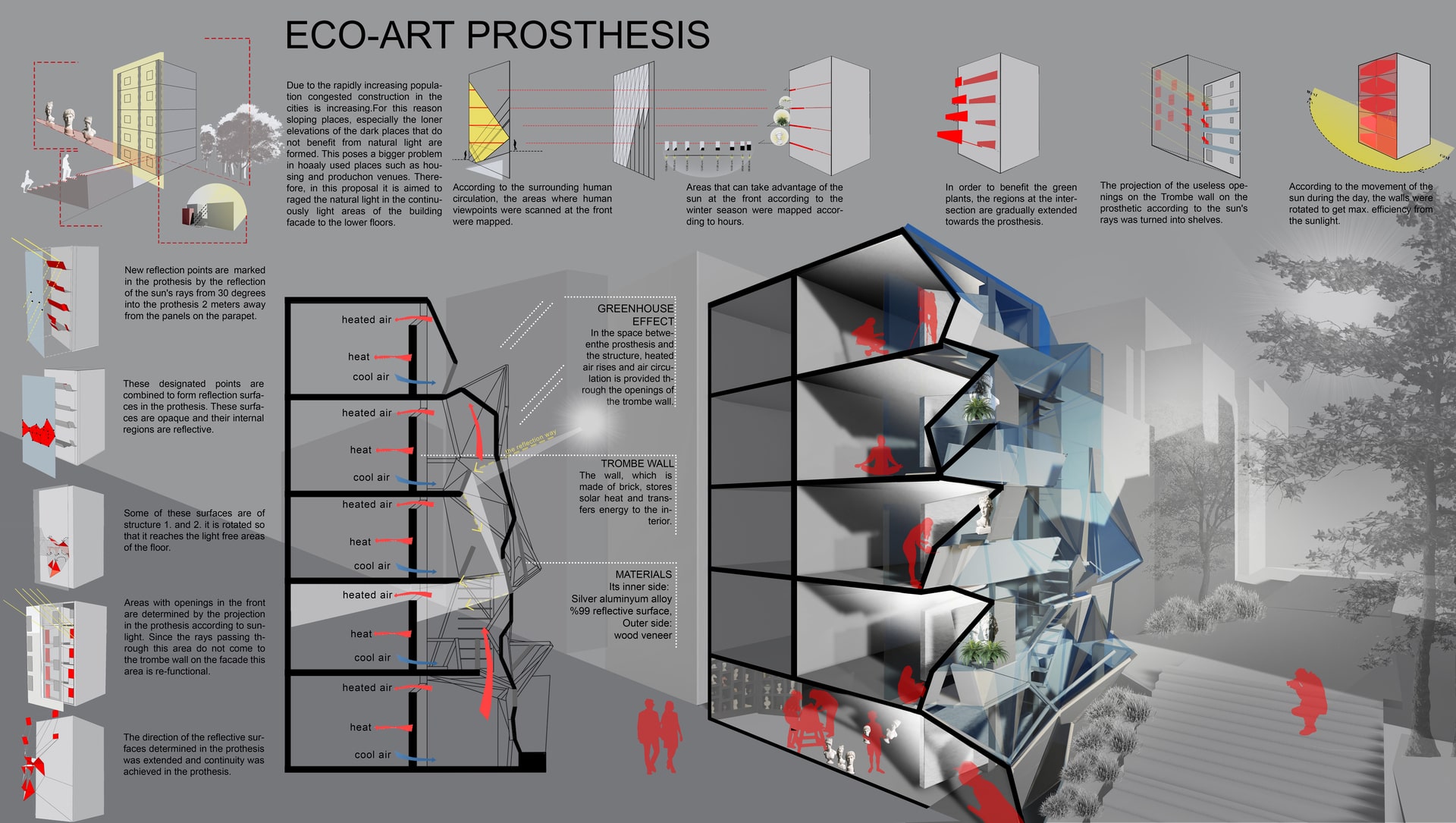Project Description
Daylight injury carries an important role in environments where people spend continuous time. Daylight, which positively affects people spiritually, is an important part of our lives. Although it is so important, it is a problem to not get the efficiency of sunlight in the big cities. In large cities where congested urbanization is intense, it is observed that time intervals or quotas are formed where structures cannot be injured by daylight. In this context, the building we have discussed and proposed ‘ecological prosthetics’ is a 5-storey apartment building in the neighborhood of Istanbul and there is an opening of about 10 metres in front of the south facade, and then adjacent apartments continue along the street. In front of the south facade, there is a staircase that increases communication and interaction within the street. There is a sculpture workshop on the ground floor which actively produces. Due to the difference in elevations and the apartment opposite, the sculpture workshop on the ground floor is located next to and below the staircase. A portion of the houses on the upper floor remain behind this apartment building. Considering that the houses are the hall and kitchen and the entrance of the sculpture workshop, it is seen that the importance of using sunlight during the day increases. However, the hourly analysis shows that the workshop does not actively benefit from sunlight until 1.00 pm during the winter months. However, also in housing 1 and 2. the floors were not able to benefit from the morning sun. In order to solve this problem, the prosthesis proposed to the building facade: 1-To convey the active sunlight coming to the upper floors to the workshop and lower floors 2-To provide an alternative December where daylight can be used 3-Greenhouse effect in the building by creating natural ventilation and heating effect to give 4-To offer an alternative way of warming by using the Trombe wall 5-it was intended to increase the visibility of the prosthesis in the street by creating an exhibition space for the sculpture workshop. As a first step, a mapping was made over the visibility of the building facade. In this mapping, the human view angle from the bottom and top steps of the ladder is considered to be 95 degrees and the areas that scan the structure are determined. In the second step, the structure's state of active sunlight during the winter months is mapped according to the hours. According to this mapping, the concrete floors where the sunlight is intense are extended according to the light. Reflective panels were added to the exterior of the railing, which were added to the flooring. The panels, which are rotated according to the angle of sun arrival, have been placed on reflective panels where they reflect the sunlight to the prosthesis with full efficiency. Thus, the light coming from the upper floor is reflected and transmitted to the houses on the lower floor and to the production area in the workshop. For efficient use of the light from the door and window spaces, the railings were extended and shelved in these areas. Functionally it was intended to be a poetic exhibition space with light hitting the sculptures on the shelves, which could be used as an exhibition space for the sculptures. A greenhouse effect was created between the trombe wall and the prosthesis and an alternative space was presented within the city. In order to provide air circulation in this gap and to increase interaction between floors, one of the floors was deteriorated and converted into a staircase. In order to get maximum efficiency from the trombe wall, it is positioned between the bearing columns by rotating them according to the angle of arrival of sunlight. The reflected light seeps into the living area from the range above the wall to provide a natural lighting. As a result, this prothesis proposal, designed to make the dense construction within the city more livable and ecological on a human scale, aimed to increase the function of sunlight and to add a poetic effect to the light within the city by using the existing sculpture workshop context.
